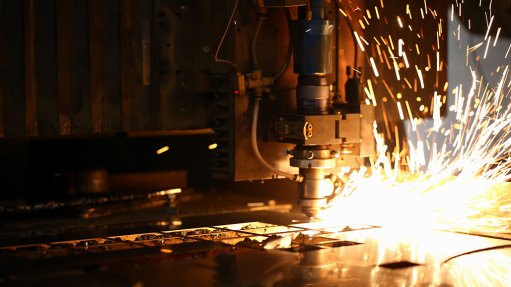Energy efficiency standards, labelling programmes effective, says SANEDI
The International Energy Agency's (IEA's) 'Achievements of Energy Efficiency Appliance and Equipment Standards and Labelling Programmes' report states that labelling electrical equipment according to energy performance helps consumers make informed buying decisions, leading to billions of dollars of savings on electricity and avoiding 300-million tonnes of carbon dioxide emissions a year.
“This is exciting news for South Africa, as the study echoes the experience that we have had with our local Energy Efficiency Standards and Labelling (EES&L) programmes,” says South African National Energy Development Institute (SANEDI) energy efficiency & corporate communications GM Barry Bredenkamp.
A recent research report, issued on behalf of the Department of Mineral Resources and Energy, SANEDI and the University of Cape Town, on electricity consumption in the South African residential sector shows that electrified households consume about 17% of the country’s total grid electrical energy.
The IEA report draws on nearly 400 documents and shows that the longest-running EES&L programmes have saved about 15% of their country’s total electricity consumption. About two-thirds of these savings are seen in the residential sector, while savings in the services and industrial sectors each account for one-sixth.
SANEDI reports that this international study has strengthened local EES&L programmes through knowledge gained towards implementation, which are seeing success in South Africa in line with international findings, Bredenkamp notes.
“The evidence shows that EES&L programmes can deliver annual electricity demand savings equal to the annual production of renewable energy. Regular updates of EES&L policies are required to keep them in line with technological improvements, and to drive innovation in energy efficiency,” he says.
“This demands due diligence, such as industry consultation, and SANEDI is eager to participate in this process. To this end, South Africa has started the process for standards of labelling to be introduced to streetlights, electric motors and televisions; cost:benefit analyses are at an advanced stage to prove this can work in the country,” says Bredenkamp.
The country’s existing National Energy Efficiency Strategy, first published in 2005, included a target to improve residential energy intensity by 10% in 2015 compared with a year 2000 baseline. The mechanisms predicted for achieving this target included standards and labelling of household appliances. Regulations requiring minimum energy performance standards and consumer labels for large residential appliances, including laundry, refrigerators, air conditioning, and geysers, were introduced in 2015.
“Research undertaken in 2019 concluded that our local standards and labelling programme will reduce electricity consumption by 7.1 TWh by 2030, reducing residential utility bills in total by $1.4-billion, or $54 per household. The IEA report reinforces how effective these programmes are. These reductions bring benefits to consumers as well as lower emissions and lower energy demand,” Bredenkamp says.
The report’s findings are drawn from evaluation studies covering 100 countries, including those with the longest running and strongest appliance policies, such as China, the European Union, Japan and US, and confirm that well-designed policies encourage product innovation and lead to economies of scale, which reduces the cost of appliances even without accounting for the efficiency gains or reducing the size or service of the appliance.
“Notably, South Africa is mentioned in this report. This is encouraging, given that we are the world’s fourteenth largest global emitter of greenhouse gases, because we rely on coal for energy generation,” says SANEDI EES&L Programme project manager Ashanti Mogosetsi.
“The report confirms that improvements to the energy efficiency of appliances and equipment are some of the lowest-cost options available today for reducing energy consumption and associated emissions. They show a typical society benefit-to-cost ratio of four-to-one,” Bredenkamp says.
These programmes provide net financial benefits to individuals and the community. Other benefits include employment, product innovation, water savings, improvements in air quality and the reduction of public expenditure on health, which add to the case for stronger and more widely implemented standards and labels, he adds.
Article Enquiry
Email Article
Save Article
Feedback
To advertise email advertising@creamermedia.co.za or click here
Comments
Press Office
Announcements
What's On
Subscribe to improve your user experience...
Option 1 (equivalent of R125 a month):
Receive a weekly copy of Creamer Media's Engineering News & Mining Weekly magazine
(print copy for those in South Africa and e-magazine for those outside of South Africa)
Receive daily email newsletters
Access to full search results
Access archive of magazine back copies
Access to Projects in Progress
Access to ONE Research Report of your choice in PDF format
Option 2 (equivalent of R375 a month):
All benefits from Option 1
PLUS
Access to Creamer Media's Research Channel Africa for ALL Research Reports, in PDF format, on various industrial and mining sectors
including Electricity; Water; Energy Transition; Hydrogen; Roads, Rail and Ports; Coal; Gold; Platinum; Battery Metals; etc.
Already a subscriber?
Forgotten your password?
Receive weekly copy of Creamer Media's Engineering News & Mining Weekly magazine (print copy for those in South Africa and e-magazine for those outside of South Africa)
➕
Recieve daily email newsletters
➕
Access to full search results
➕
Access archive of magazine back copies
➕
Access to Projects in Progress
➕
Access to ONE Research Report of your choice in PDF format
RESEARCH CHANNEL AFRICA
R4500 (equivalent of R375 a month)
SUBSCRIBEAll benefits from Option 1
➕
Access to Creamer Media's Research Channel Africa for ALL Research Reports on various industrial and mining sectors, in PDF format, including on:
Electricity
➕
Water
➕
Energy Transition
➕
Hydrogen
➕
Roads, Rail and Ports
➕
Coal
➕
Gold
➕
Platinum
➕
Battery Metals
➕
etc.
Receive all benefits from Option 1 or Option 2 delivered to numerous people at your company
➕
Multiple User names and Passwords for simultaneous log-ins
➕
Intranet integration access to all in your organisation


















